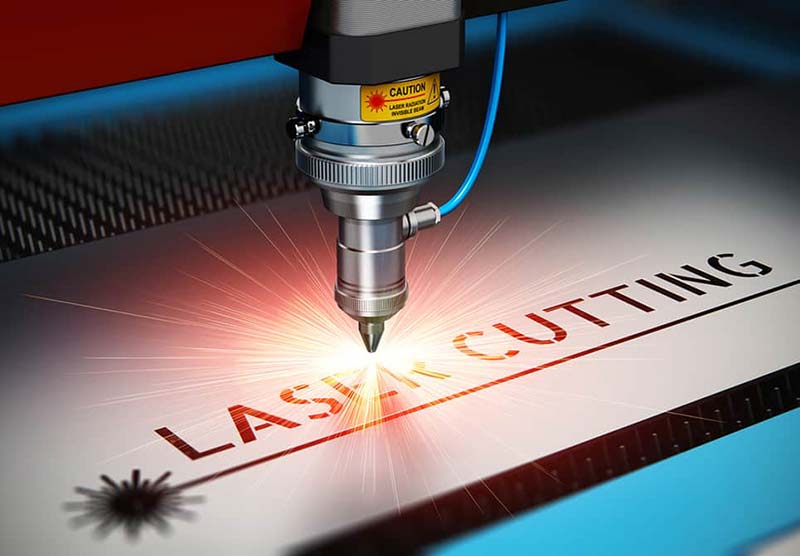
As every laser machine operator knows, the top 5 fiber laser cutting issues would be roughness, burrs, deformation, couldn't cut through, and material discoloration. What professional and practical solutions are there for them? In this post, we will discuss it in detail.

Through fiber laser cutting, the section will form vertical lines. The texture's depth determines the cutting section's roughness. The shallower the texture is, the smoother the cutting section is. Roughness affects not only the section appearance but also the friction properties. So, in most cases, we need to reduce the roughness to get better cutting quality.
Laser cut quality troubleshooting
Carbon steel cutting generally encounters problems such as the insufficient lightness of the thin plate section and the rough section of the thick plate. For different sheet thicknesses, we need to choose a CNC fiber laser cutting machine with the appropriate laser power.
Generally speaking, a 1000W fiber laser source can do a nice and clean cut on carbon steel no more than 4mm, 2000W is 6mm, and 3000W is 8mm.
The removal of dross requires extra work, so we can intuitively judge the quality of the cut by the amount and degree of burrs.
How do you prevent dross in laser cutting?
First, check the laser output, whether the light spot is round, and whether the light spot is coaxial with the nozzle's center hole. The circular spot indicates that the lateral distribution of the laser energy is balanced. And the energy distribution formed after being focused by the lens is also more uniform. The more consistent the energy distribution, the better the cutting quality.
Second, check the coaxial.
The better the coaxiality between the light spot and the center hole of the nozzle, the better the cutting quality.
Third, check whether the lenses have fine particles, dust, splashing residues, and other objects that affect the cutting quality and whether the lenses have tiny cracks that are not easily found by our eyes, which will affect the transmission of laser power.
Does the temperature affect the laser cutting? The answer is Yes.
In the process of laser cutting, the area around the cut is heated. If the cutting causes the part to heat up sharply, it will deform.
How to avoid thermal deformation during the laser cutting process?
Lowering the laser output power and using short-pulsed lasers can reduce part heating and avoid deformation.
As a complex process, it is often encountered that the material cannot be cut through during laser cutting. The most common reason for this is that the power of the laser has dropped or the lamp has aged so that the laser beam's energy is not enough. At the same time, too fast cutting speed, damaged focusing lens, poor focusing effect, incorrect optical path, and unstable voltage. All these are the reasons that may cause the laser not cutting all the way through. Of course, many other factors cause the sample to be impenetrable, such as the problem of the material itself, the insufficient air pressure of the auxiliary gas, the turbid water in the cooling system, and the poor heat dissipation effect.
Solutions:
• Properly reduce the cutting speed of your fiber laser cutter machine, clean the contaminated reflective lenses and replace the lenses regularly.
• Readjust the optical path and adjust the focus until the laser hits the spot on the paper that is concentric with the center of the nozzle.
• When laser cutting aluminum or copper, it is best to polish the surface in advance or apply light-absorbing material to deal with the problem of high reflectivity.
• Clean the inside of the nozzle regularly, increase the pressure of the auxiliary gas, and replace the distilled water of the cooling system in time.
This case usually refers to stainless steel. As a high temperature resistant and thermal insulation material, when we cut stainless steel with our fiber laser metal cutting machines, due to its slow heat conduction, it will generate and accumulate high temperature near the cutting area, so the stainless steel at high temperature will oxidize in the air. Depending on the temperature, the oxidation depth is also different, resulting in different colors. In addition, too slow cutting speed, incorrect focus, and low gas purity can cause surface discoloration of the sheet.
Solutions:
• Cooling the material
• Increase the feeding rate of the CNC metal laser cutter
• Use the locator to test and adjust the focal length
• Increase pressure
• Use high-quality and high-purity nitrogen
If you want to get a nice and clean cutting project, the most important thing is to buy a high-quality fiber laser cutting machine with the best technical support. As a professional manufacturer, EagleTec CNC is your best choice. Feel free to contact us.
Original Post from EagleTec CNC
Copyright: original works, for permission to reproduce, reprint, please be sure to indicate the form of hyperlinks to the original source of the article, author information, and this statement.
Copyright © Jinan EagleTec Machinery Co., Ltd. All Rights Reserved | Sitemap